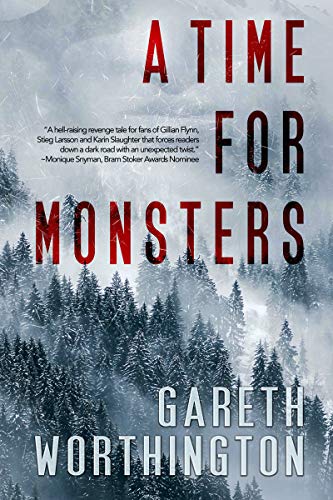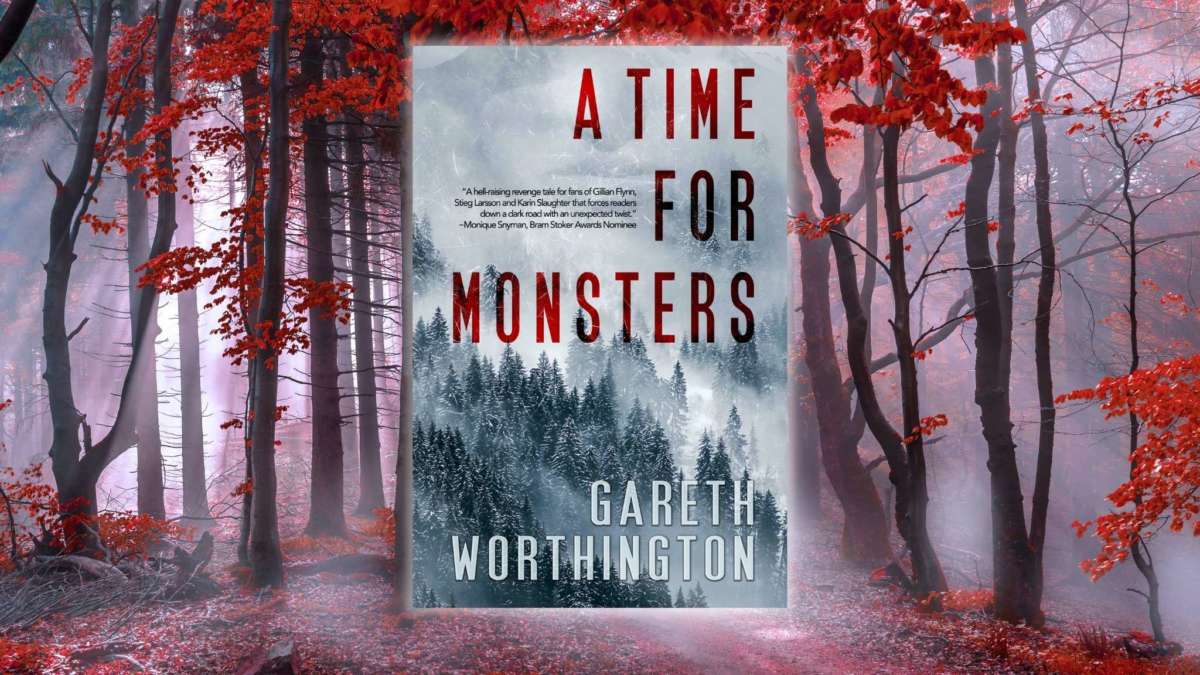A Time for Monsters by Gareth Worthington
In Gareth Worthington’s latest novel, the thriller A Time for Monsters (Vesuvian Books), veteran Detective Arne Huakaas is a man beaten down by life. His 30 years on the police force in Oslo, Norway, have jaded his outlook beyond repair. His failure to identify the killer in a year-long investigation into multiple murders has further proven his incompetence.
And the newest murder is just like the others — the victim bludgeoned with a block of wood and the narrow end of a bottle jammed into the hole in his head with no forensic clues.
A DISTINCTLY NORWEGIAN MODUS OPERANDI
Every year, Norway celebrates Easter by producing one crime series after another on radio and television. Now, just like last year, a serial killer has “bastardized” the tradition by killing five men, bludgeoning them to death with one blow of a Kubb piece, then inserting a bottle of akevitt, a Nordic alcohol, into the head wounds. Kubb — a lawn game that’s sort of a cross between horseshoes and bowling where the object is to knock over wooden blocks called kubbs by throwing wooden sticks called klubbs — is somehow at the heart of the killings. They’ve dubbed the murderer the King Kubb Killer.
Not only is Huakaas cynical about the case, but he doesn’t recognize the world anymore. It’s no longer kind to fifty-some-odd-year-old white men. Oslo has morphed into a city of immigrants, increasing the crime rate and making it feel like a foreign land. Huakaas is old-school, “a baby boomer trapped in a warped time, where marriage was forever, men ruled the home, and children were seen and not heard.” He doesn’t understand the new and politically correct world he now lives in.
And he knows firsthand how women get away with ruining a man’s life after he makes only a few mistakes in private, airing dirty laundry to the world — they “played emotional games and mind fucked their spouse.” That’s exactly what his ex-wife had done to him.
A VICTIM’S VENGEANCE
Reyna “Rey” Blackburn has a score to settle. She’s sick of men abusing their wives and then going on with their day while their children hide in a corner. Just like with her dad, what happens in private stays private. Abusers behave differently in public. At least they arrest and prosecute rapists and murderers. These cowardly wife-beaters suffer no punishment; no one exacts justice for the wives and children. Until now.
Music has always been Rey’s salvation. When she was a child, it was the only thing that could drown out the misery in her home and “convey her innermost self.” Musical artists were “able to articulate the agony, while the rest of the world didn’t give a shit. She needed those musicians as she needed air to breathe.”
The ability to read people is Rey’s superpower. It only takes her a moment to recognize the abusers — she can “see into their souls.” Her skill had saved her growing up, and now it allows her to administer her own brand of justice.
Rey knows who she is — a thirty-something with an impressive Ph.D., but also a “cold and calculating sociopath hiding in plain sight.” A monster who is “doing bad things for the right reasons.” Murder is the only thing besides music that allows her to feel emotions.
THE PAST BLEEDS INTO THE PRESENT
As Huakaas continues his investigation into the killings, his path crosses with Rey’s in a personal way. He has no idea she’s the King Kubb Killer. But when she leaves him a message on a hospital bedsheet — Men reap what they sow — it shocks the hell out of the sexist Huakaas that the killer might just be a woman, and one he’s recently met, no less.
Huakaas is a perfect anti-hero, his faults so many that readers aren’t at first sure he’s worthy of respect, but later he admits his failures. We can empathize with a person so flawed and apathetic that the only way forward is through a major life change. Rey is so damaged that we understand her motivations and her search for joy in the wrong places. We continually ask ourselves, Can either Huakaas or Rey obtain redemption, and must they suffer punishment to get it? Do they even want it?
Both Huakaas and Rey realize that karma’s a bitch.
The narrative alternates between the present — the murders and investigation — and Rey’s past. With each traumatic chapter from Rey’s life, we come to understand the pain and suffering that have created a serial killer. As Worthington deftly twists and turns us through the story, we think we know the players well, only to discover that the author has been withholding some surprises until the very last lines.
For thriller fans of vigilante justice, this story of abuse and retribution will have readers considering whether bad deeds should be forgiven or punished — or both.





